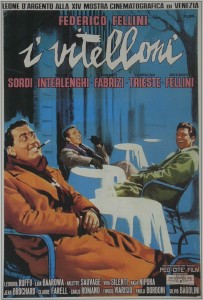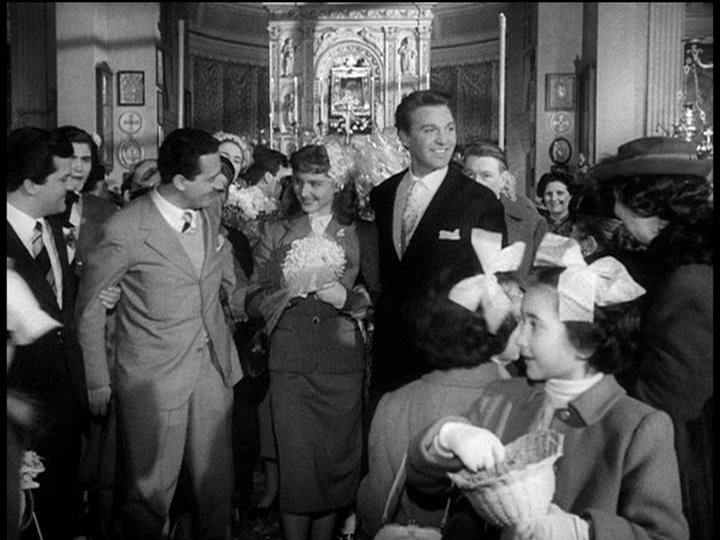“Who are you? You’re nobody. You’re all nobodies.”
|

Synopsis:
A group of male friends in 1950s Italy — including a newly married womanizer (Franco Fabrizi) and an aspiring playwright (Leopoldo Trieste) — dream of leaving town and making it big.
|
|
Genres, Themes, Actors, and Directors:
- Coming of Age
- Fellini Films
- Friendship
- Italian Films
- Womanizers
Review:
Along with Amarcord (1973), I Vitelloni (which translates literally into “overgrown calves”) is widely regarded as one of Fellini’s most autobiographical films. Taking place in the postwar seaside town of Rimini (which bears resemblance to Fellini’s childhood home), I Vitelloni is an episodic character study which ambles through its script much like the characters themselves amble through their aimless lives. As noted in the Bright Lights Film Journal review, “passivity and ineffectualness hamper all the ‘vitelloni'”, who possess big dreams but lack the willpower to pursue them seriously. Less overtly surreal than Fellini’s later films, I Vitelloni nonetheless shows ample evidence of this iconic director’s unique sensibility — especially in the carnival-like crowd scenes. Nino Rota’s infectious score further marks Vitelloni as unmistakably Fellini-esque, and reminds one how closely associated Rota’s music is with Fellini’s entire oeuvre.
Redeeming Qualities and Moments:
- A spot-on look at young men coming of age in a small town

- Gorgeous visuals

- Nino Rota’s wonderfully expressive score
Must See?
Yes. This autobiographical film is an important part of Fellini’s early oeuvre, and should be seen by all film fanatics.
Categories
Links:
|
One thought on “I Vitelloni / The Young and the Passionate (1953)”
A must!
As the assessment states, if one looks closely, one notices the surreal elements in this film (esp. in my favorite sequence – carnival night) – the kind that later dominated Fellini’s career. The film has a character-is-plot storyline – yet it’s rich in feeling and depth, and is marvelously photographed and scored as well.
Although it follows a group of friends, the focus is on Fausto – with his pre-Presley look and smile. This is an incisive portrait of a womanizer – one who may not even want to face that about himself (i.e., watch how he himself cries when he causes his wife to cry). Which is why it’s particularly interesting when he’s fired from his job after attempting to seduce the boss’ wife for personal gain. As the boss tells Fausto re: his marriage: “…we’re not bored. Because we really love each other.” Fausto is always bored. And so vain that he’s hawk-like about his wife’s weight – as if it’s a reflection on him.
Two points for gay audience members:
1) Is Alberto in denial? Note a) how he dresses in drag for carnival night – looking somewhat like Jack Lemmon in ‘Some Like It Hot’ – and causes his mother to cry when he’s looking for the perfect hat; b) he insists to Moraldo that they all need to be married (the implication being that he can then follow his real desire); c) Alberto acts strangely maternal toward Fausto.
2) Leopoldo – portrayed as a bad playwright wanna-be – is unwittingly propositioned by a gay actor (w/ a tooth missing! – because he’s ‘off’?).
The last sequence – at the train station – is esp. moving.
For some reason, I see the influence of this film on Woody Allen’s ‘Stardust Memories’ – which, in general, is Fellini-esque.